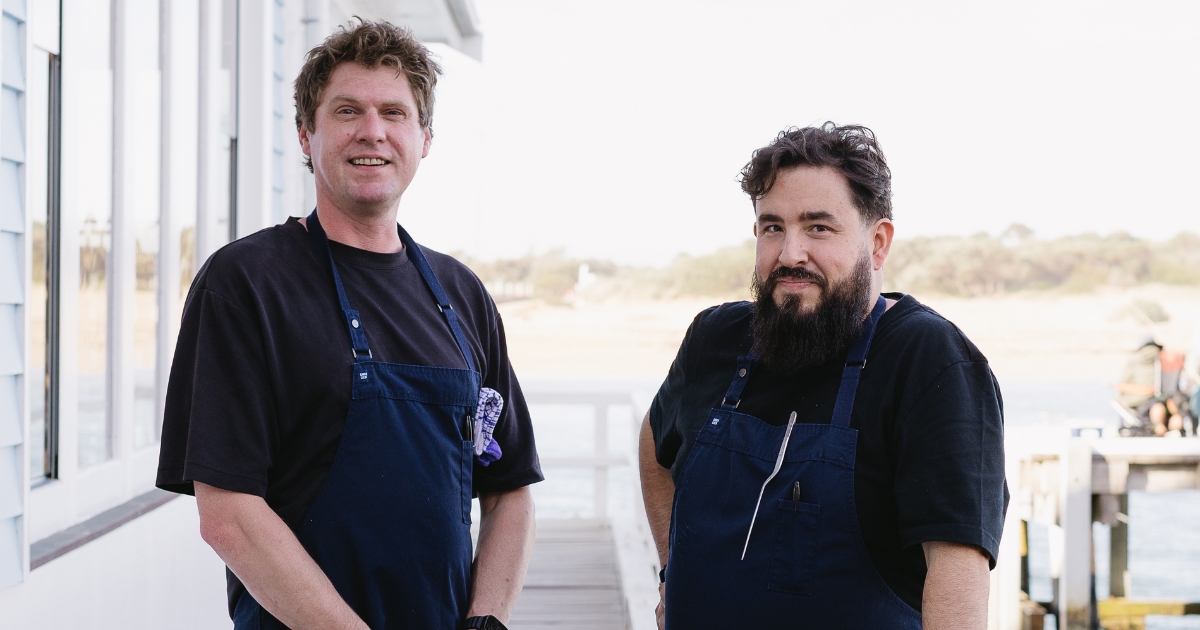Bystanders using AEDs to save lives

Lyndy Clarke (right) with the AED that saved her life; and colleague Pete Tserbis, who used it on her. Photo: FACEBOOK/AMBULANCE VICTORIA
More bystanders than ever are using publicly accessible automated external defibrillators (AED) to help Victorians in cardiac arrest, according to data released by Ambulance Victoria (AV).
The latest Victorian Ambulance Cardiac Arrest Registry (VACAR) Annual Report revealed paramedics responded to a record 7,830 out-of-hospital cardiac arrests in 2022-23, up 6.4 per cent from the previous year.
Of those cases, 139 had a shock delivered from a public AED, the highest number on record and up from 107 cases last year.
AV director of research and evaluation Ziad Nehme said VACAR had provided valuable insights into out-of-hospital cardiac arrests for more than two decades
“Out-of-hospital cardiac arrest is one the leading causes of death worldwide and a significant public health issue in Australia.
“Data from the most recent VACAR report reinforces why Victoria has the best cardiac survival rates in Australia, and among the best in the world.
“When cardiac arrests were witnessed by members of the public, 80 per cent of people were willing to step up and commence lifesaving cardiopulmonary resuscitation (CPR) – a vital step in the chain of survival.
“There was also a record number of people using AEDs, with 53 per cent of patients surviving their cardiac arrest after receiving a shock before paramedics arrived.”
In September last year, Melbourne drama teacher Lyndy Clarke experienced first-hand the lifesaving impact of bystander CPR and AEDs, after she collapsed while directing a play at Caulfield Grammar School.
Luckily, colleague Pete Tserbis witnessed the incident, instantly retrieved a nearby AED and started CPR.
“I knew immediately from her limp body and no response from talking to her or squeezing her hands that it was serious,” Mr Tserbis said.
“Had I not been trained in CPR, I would have found myself in a situation without the skills to help Lyndy. I couldn’t imagine having stood there and done nothing.”
Ms Clarke received three shocks from the AED before paramedics arrived and transported her to hospital.
“It came completely out of the blue. I was fit and healthy and had no signs or symptoms of heart issues,” she said.
“The last thing I remember is getting up to give a direction and then I was waking up in the hospital 24 hours later.”
Coincidentally, the 68-year-old was responsible for the AED that ended up saving her life, after she witnessed someone go into cardiac arrest at a school performance more than 10 years ago.
She said the incident opened her eyes to the importance of learning CPR and how to use an AED.
“If the defib had not been in the foyer outside the auditorium, I would have died.
“People always assume they’ll never need to help someone in cardiac arrest but my advice is; learn these lifesaving skills and be aware of your nearest AED.”
Every day, about 20 Victorians suffer a cardiac arrest but only one in 10 survive.
When a patient receives CPR and a shock from an AED before paramedics arrive, their chance of survival more than doubles.
AV MICA paramedic Brett Meyer said his team’s clinical care on scene was aided by bystander intervention, which gave Ms Clarke the best chance of survival.
“Our message is simple: you don’t need to be a paramedic to save a life, just remember to Call (Triple Zero 000), Push (Perform CPR) and Shock (use an AED).”

















